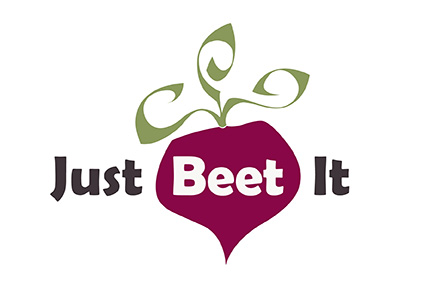History of the Beet
The BEET (scientific classification: Beta vulgaris) has a complex and fascinating history, filled with legendary offerings at Delphi, advanced medicinal properties, and contributing to the world's economic growth.
Descended from the sea beet, B. maritima, a wild seashore plant growing around the Mediterranean and along the coasts of Europe and North Africa, the beet is a significant part of the world's history. The native sea beet was primarily eaten for its leaves rather than its root, which appears more like a skinny carrot than that of the modern, expanded beetroot we are familiar with in the 21st Century. After thousands of years of domesticating and cultivating, the beetroot today is bigger and sweeter than its wild ancestor. Before the beet became popular as a main dish, the beet gained its fame for other uses. Since ancient times, the beet has been used for dyes, teas, and medicinal properties treating constipation, fevers, skin disorders, circulation, and even as an aphrodisiac (as recorded by Roman physicians and naturalists of the time). During excavations, archaeologists discovered paintings of beetroots on the walls of lupanares (brothels) in ancient towns, preserved in ash from the eruption of Mount Vesuvius in 79 AD. The beetroot contains significant amounts of boron, which relates to the production of human sex hormones.
Prior to Romans cultivating the plant for its roots, the leaves were consumed, and the root was used more medicinally than for consumption; however, by the Roman era, the beets were cultivated to larger, sweeter bulbs. In The Art of Cooking, Apicius (about 1st Century A.D..), a Greek chef, shares the diversity of the beet, by using it in broths and as a side dish served with vinegar, mustard, and oil. In later centuries, the cultivation of beets spread throughout Europe and Asia. Around the 16th Century, the garden, or table beet (the one we are most familiar with today) was cultivated and consumed in Europe.
In the nineteenth century, the beet became famous for its high concentration of sugar (the table beet and sugar beet are different varieties), and the first sugar beet factory was developed in Poland. When sugar cane was restricted by the British, Napoleon utilized beets as the leading source of sugar. Around this time, beets were brought to the United States. Currently, the leading commercial producers of beets include the United States (Wisconsin and New York), Poland, France, Russia, and Germany. Beet sugar may have contributed in helping end the Caribbean slave trade, as its popularity provided an alternative to sugarcane crops harvested by slaves.
Currently, the beet has gained fame for its incredible nutritional benefits, versatility in the kitchen, and vibrant hues perfect for DIY dyes. For more fun facts about the beet, check out The History of the Beet: 10 Cool Facts About the Beet That You Didn’t Know.
Looking for ways to eat beets? Stop by Eating the Beet from Root to Leaf and How to Eat Beets? Let us Count the Ways.
Resources
Apicius. (Vehling, Joseph D., Trans., and Ed.). (1977). Cookery and Dining in Imperial Rome: A Bibliography, Critical Review and Translation of the Ancient Book Known as Apicius de re Coquinaria. New York: Dover Publications (original work published 1936).
Bender, A.E. and D.A. Bender. (1995). Oxford Dictionary of Food and Nutrition. Oxford, UK: Oxford University Press.
Davidson, Alan. (1999). The Oxford Companion to Food. New York: Oxford University Press Inc.
Morgan, Diane. (2012). Roots: The Definitive Compendium with more than 225 Recipes. San Francisco, CA: Chronicle Books LLC.
Nottingham, Stephen. (2004). Beetroot. Retrieved from http://www.stephennottingham.co.uk/beetroot6.htm.
Robinson, Jo. (2013). Eating on the Wild Side. New York: Little, Brown and Company.
Splittstoesser, W. E. (2014). Beet. In Public Libraries. Retrieved from http://www.worldbookonline.com/pl/infofinder/article?id=ar052980.


